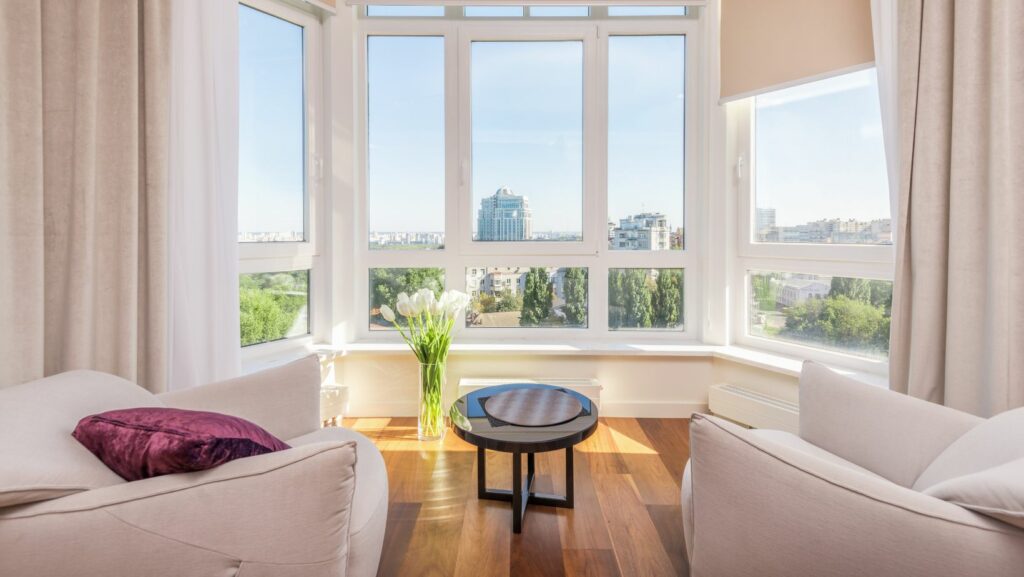Windows are often considered a building’s eyes, allowing natural light to filter in and creating a vital connection between the interior and exterior spaces. The design and placement of windows can significantly impact the lighting and ambiance within a room. We will delve into the multifaceted influence of replacement windows Fort Worth design on interior lighting and the overall atmosphere of a space.
Window Placement and Natural Light
The placement of windows plays a crucial role in determining the amount and quality of natural light that enters a room. South-facing windows receive the most sunlight throughout the day, providing ample natural illumination. In contrast, north-facing windows receive softer, more diffused light. East-facing windows bring gentle morning light, while west-facing ones capture the warmer afternoon glow. Understanding these orientations allows designers to optimize natural lighting based on the intended use of the space.
Window Size and Light Distribution
The size of windows directly impacts how light is distributed within a room. More oversized windows allow more light to enter, creating a brighter and more open atmosphere. Floor-to-ceiling windows, for instance, can transform a space by maximizing daylight and blurring the boundaries between indoor and outdoor environments. However, strategically placed smaller windows can create focal points and enhance the overall lighting scheme.
Window Shape and Architectural Aesthetics
Beyond functionality, the shape and style of windows contribute to a room’s architectural aesthetics and ambiance. Arched windows add a touch of elegance and can create interesting light patterns throughout the day. Similarly, bay windows extend the interior space, offering panoramic views and inviting more natural light. The design of window frames, whether sleek and modern or ornate and traditional, further influences a room’s visual appeal and character.
Window Treatments and Light Control
While natural light is desirable, controlling its intensity and direction is essential for comfort and functionality.

Window treatments such as blinds, curtains, and shades offer solutions for regulating light levels and enhancing privacy. Sheer curtains filter light gently, while blackout options provide complete light blockage when needed. Innovative window technologies also enable precise control over natural light, contributing to energy efficiency and user convenience.
Window Materials and Thermal Comfort
The materials used in window construction impact light transmission and thermal comfort. Double-glazed or low-emissivity (Low-E) windows enhance insulation, reducing heat loss in winter and heat gain in summer. This improves indoor comfort and contributes to energy savings by reducing the need for heating and cooling systems. Additionally, choosing sustainable window materials promotes environmental responsibility and long-term durability.
Window Views and Psychological Well-being
The view from a window can significantly influence our mood and well-being. Access to natural landscapes, greenery, or urban vistas can evoke calmness, inspiration, or connection to nature. Strategic window placement that frames desirable views enhances the overall ambiance of a space and contributes to a positive psychological experience for occupants. Incorporating biophilic design principles further strengthens this connection between indoor spaces and the natural world.
Window Reflections and Visual Depth
Window design also influences a room’s visual depth and perception of space. Reflective surfaces, such as glass windows, can create illusions of expanded space by bouncing light around and visually connecting different areas. Mirrored or tinted glass adds a layer of privacy while still allowing light penetration, contributing to a sense of openness without compromising comfort or functionality. Moreover, strategically positioned mirrors near windows can amplify natural light and enhance the overall brightness of a room.
Window Ventilation and Indoor Air Quality
In addition to light, windows are crucial in providing ventilation and maintaining indoor air quality.

Operable windows allow for natural airflow, promoting cross-ventilation that helps regulate temperature and reduce reliance on mechanical cooling systems. Fresh air circulation enhances comfort and reduces the buildup of pollutants and humidity, creating a healthier indoor environment. Incorporating adjustable windows or vents with screens further enhances ventilation while keeping insects and debris out.
Window Integration with Lighting Design
Effective interior lighting design integrates seamlessly with window placement and natural light sources. Task lighting, ambient lighting, and accent lighting can be strategically positioned to complement daylighting and create layers of illumination that enhance functionality and aesthetics. Dimmable fixtures and lighting controls allow occupants to adjust light levels according to the time of day, personal preferences, and specific activities, resulting in dynamic and adaptable lighting environments that cater to diverse needs.
The design of windows goes beyond mere functionality; it shapes the lighting, ambiance, and user experience within a space. By carefully considering factors such as placement, size, shape, treatments, materials, views, and their collective impact, designers can create environments that are not only visually appealing but also conducive to well-being and sustainability. The influence of window design on interior lighting and atmosphere underscores the importance of thoughtful architectural and interior design practices.


More Stories
Architectural Solutions for Noise Control in Urban Environments
Selecting the Right Plumbing Service for Your Home
Highest 8 Signs Your Roof Needs Repair: When to Call a Professional